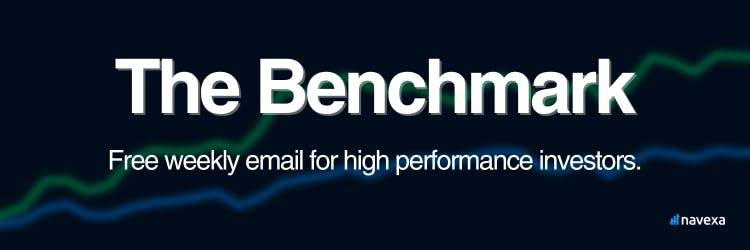May 27, 2024
The volatility of volatility
Dear Reader,
The CBOE Volatility Index is one of the most interesting market charts you’ll see.
Because it’s an indicator designed with a specific, ambitious goal:
To predict the near-term future of the stock market.
The Volatility Index, or VIX, ‘provides a measure of market volatility on which expectations of further stock market volatility in the near future might be based. The current VIX index value quotes the expected annualized change in the S&P 500 index over the following 30 days, as computed from options-based theory and current options-market data‘.
In other words, the VIX tracks options to determine the stock market’s chances of being volatile (or not) over the coming month.
Here’s an historical example:
The VIX over the past five years
For reference, values above 20 are considered ‘high’, below 12 considered ‘low’, and in between considered ‘normal’.
The past five years, as you can see, have been highly volatile, no more so than when the pandemic hit in early 2020 and stocks took a dive.
The S&P 500 over the past five years
You don’t have to look too close to see the relationship between these two charts.
Generally speaking, when volatility is up, stocks are down.
Simple, right?
Not quite.
This Practitioner’s Guide To Reading VIX explains how the relationship between the index and the options market it uses to produce its volatility reading muddies the water:
‘One common misconception is that VIX levels correspond directly to the volatility observed 30 days later — assuming that a VIX level of 25 means an anticipated volatility of 25%, for instance.
‘Instead, because there has typically been an excess of demand from market participants seeking the insurance-like characteristics that options can provide, there has been a discernable “premium” in VIX — otherwise said, VIX today more often than not overstates the level of actual volatility experienced in the next 30 days‘.
The paper finds that the VIX tends to predict S&P 500 volatility at a 4-5% premium.
VIX’s 2024 ‘red streak’
Volatility is in focus right now.
In fact, the VIX just broke a nine-year-old record:
Low VIX = higher stock prices, right?
Again, not quite.
Even a casual look at the economy, markets and world events tells you we’re far from stable territory for stocks right now.
There’s multiple, compounding sources of uncertainty: Wars between nations and on inflation, stocks teetering near all-time highs, living costs pressuring investors’ buying power and in many cases suppressing appetite for risk.
So why has the VIX been plunging?
According to The Bank for International Settlements in Switzerland, the low VIX of late is likely the result of investors piling into yield-enhanced exchange traded funds.
What does that mean?
It means a new breed of actively-managed ETFs are using short-term options trading to deliver investors ‘enhanced’ income.
Which means that their appetite for longer-term options has waned.
Which the VIX reads as a decreased chance of market volatility over the coming 30 days.
Moral of the story here? Don’t always take VIX chart at face value. Understand what’s behind the trend lines and apparent correlations on the screen.
And understand that even a market indicator designed to predict volatility, can be volatile in its prediction of the, er, volatility.
Quote of the week
‘My interest is in the future… I am going to spend the rest of my life there.’
— C.F. Kettering
That’s it for this week’s The Benchmark email.
Forward this to anyone you know who needs to read it.
And, if one of our awesome subscribers has forwarded it to you…
Subscribe here for weekly emails with ideas, stories and content about long-term, high-performance investing!
Invest in knowledge,
Thom
Editor, The Benchmark
Unsubscribe · Preferences
All information contained in The Benchmark and on navexa.io is for education and informational purposes only. It is not intended as a substitute for professional financial or tax advice. The Benchmark and any contributors to The Benchmark are not financial professionals, and are not aware of your personal financial circumstances.

